Lord Ramacandra
-
Glorification of Sri Sita-Rama
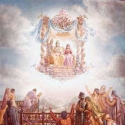
Janaka Maharaja had given the definition of bhakti to Lord Rama’s brother, Bharata. "Anyabhilasita-sunyam, jnana-karmady-anavrtam, anukulyana krsnanu-silanam bhaktir uttama. One who has no other desire than to please Krsna, and who is not influenced by the process of jnana-marga (cultivation of knowledge) karma, and so on, is situated in pure bhakti.” The king told him that nothing can control prema (pure love of God); it has its own law. One who has prema will always consider the desires of his object of love. He has no personal interest. He will always think, "How will my beloved be pleased?" Our real purpose is to please our worshipful deity, God and Guru; not to please ourselves."
-
Meeting and Separation in The Pastimes of Lord Ramacandra
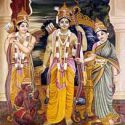
In Treta Yuga, Lord Ramacandra, Sita devi, and Laksmana went to Mamagachi. Under the shade of a large banyan tree, Sita Devi observed that Lord Rama was smiling mildly.
She inquired, “O Lord, what is the cause of your amusement?”
-
Rama Navami
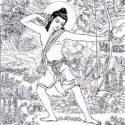
Do you know the history of Ramayana? Maharaja Dasaratha had three hundred and sixty queens, but no sons. One day he went hunting, and in the evening he met a friend of his who was a king. The king had a very beautiful daughter named Kaikeyi, and he engaged her in serving Maharaja Dasaratha. Maharaja Dasaratha was very pleased with both her services and her beauty...
-
Rama Navami - The Appearance day of Lord Sri Rama
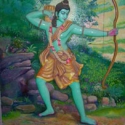
We must be one-pointed to Lord Sri Krsna, not to any other. Do you understand? Why then are we worshiping Lord Ramacandra? Someone may say, "This is not one pointed." But that is not the fact. Sri Krsna is akhila-rasamrta-sindhu. He is the enjoyer of all rasas: dasya (servitude), sakhya (friendship)...
-
Rama-Navami - Bangkok, Thailand

Do you know the history of Ramayana? Maharaja Dasaratha had three hundred-sixty queens, but no sons. One day he went hunting, and in the evening he met a friend of his who was also a king. That king had a very beautiful daughter named Kaikeyi, and he engaged her in serving Maharaja Dasaratha, who was very pleased with both her services and beauty...
-
Rama-navami in Mathura

Rama-katha is endless. Sankarsana (Lord Anantadeva) himself continuously sings the glories of Sri Rama, but even with unlimited mouths he is unable to touch the end in any way. We can just relish, and pray that these infinite pastimes may appear in our heart. Tulasi dasa has written Rama-caritra-manasa, which is based on Sri Valmiki's Ramayana. All the pastimes written by Tulasi dasa come from the Ramayana and other Puranas, but the principles of bhakti that he gave there have been taken from Srimad-Bhagavatam. He presented important selected verses, especially from the eleventh canto, and translated them into Hindi poetry.
-
The Appearance day of Lord Ramacandra

In ancient times there was a king named Maharaja Dasaratha. He was a very, very strong personality. He conquered all kings in the South, North, East, West, and everywhere. Therefore his name was Dasa-ratha, meaning that his chariot went everywhere in the ten directions...
-
The Appearance Day Of Lord Sri Rama

Who is Sri Rama? He is Krsna Himself, and Sita is Radhika Herself. In order to establish the principles of maryada, regulative etiquette, Krsna appeared in the form of Sri Rama. His associates also appeared in Rama-lila. Gopisvara Mahadeva manifested as Hanuman and Baladeva appeared as Laksmana. Satrugna and Bharata are also manifestations of Krsna because they are His weapons...
-
The Glories of Hanuman
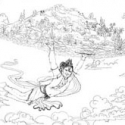
Now we are coming to our subject - where we left off in Badger. Why do we prefer Ambarisa Maharaja over Prahlada Maharaja? Prahlada Maharaja is a siddha-bhakta and parama-mahabhagavata (a perfected devotee situated at the stage of prema, love of God), and Ambarisa Maharaja is a sadhaka-bhakta (a practitioner at the stage of bhava-bhakti) So why do we want to follow Ambarisa Maharaja?





